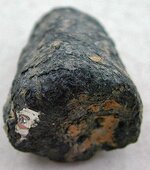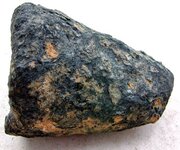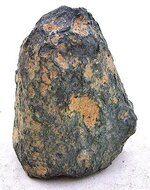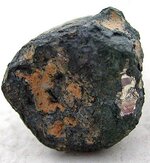mxtswinger
Sr. Member
I've been detecting for a detectorless friend on occasion. Lots of pre-revolution history on his place. I found this and am hoping someone can tell from the pics whether it is silver. It's much tougher to cut than lead and is covered with black scale. Is there a chemical test I could do?









